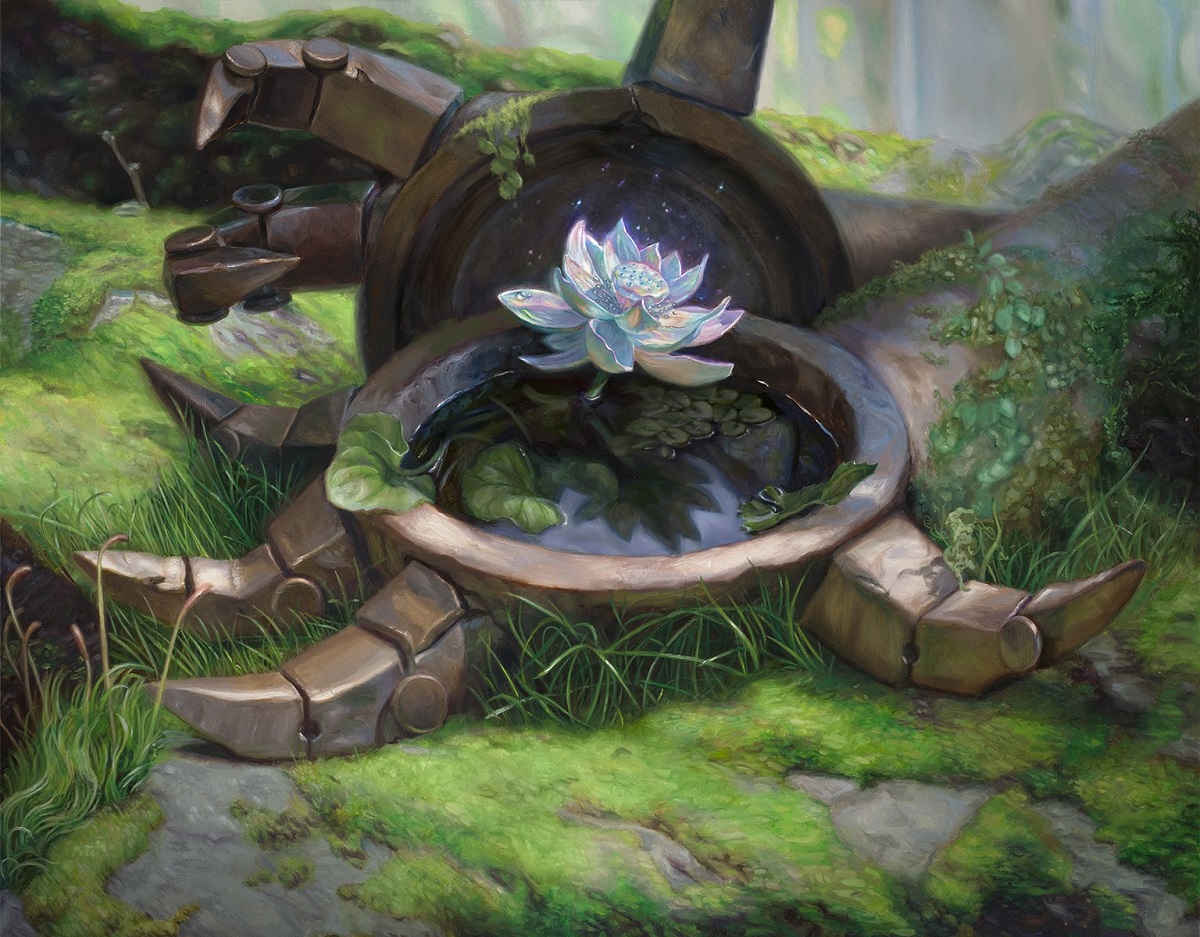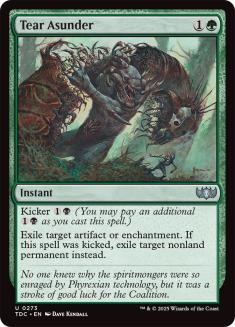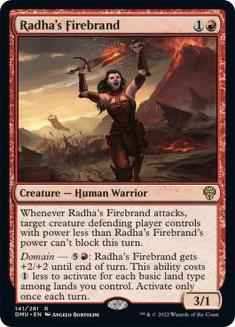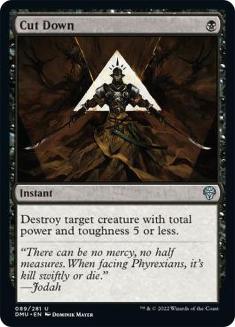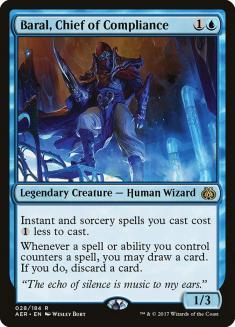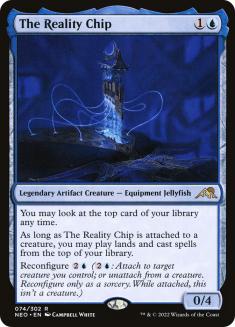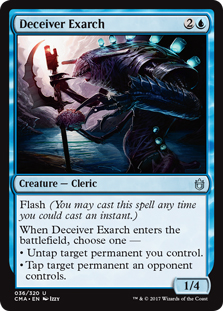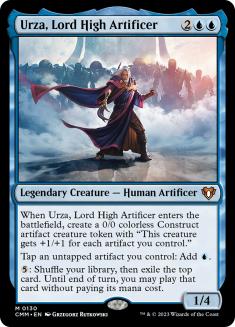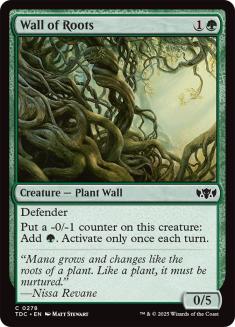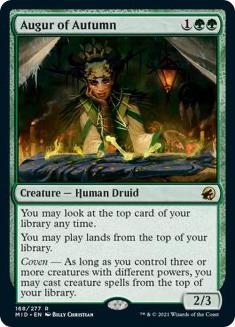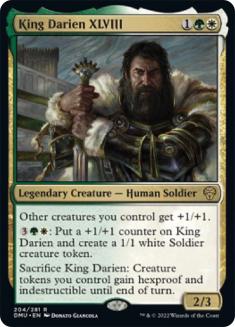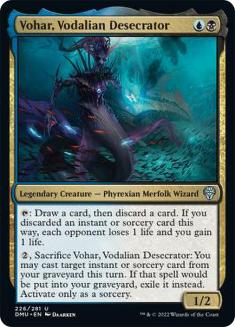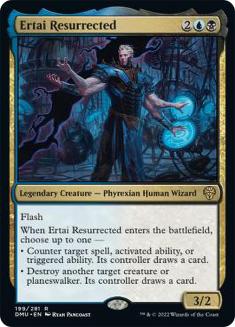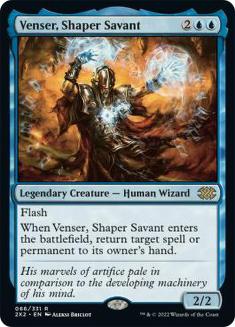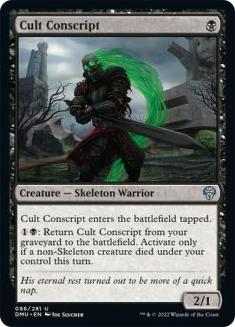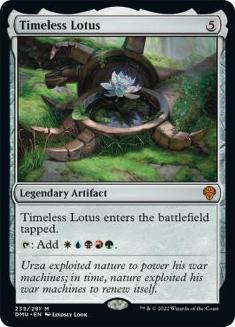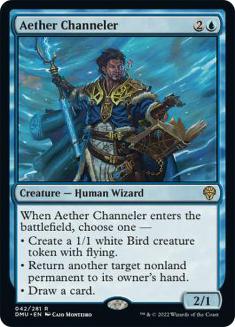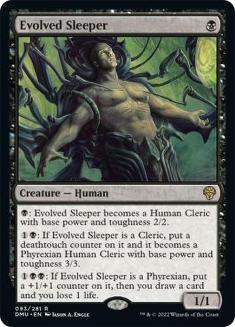Well gamers, after a longer break than we usually get between sets but a shorter amount of time than some players would prefer, Dominaria United is finally upon us. Our last return to Dominaria wasn’t that big of a deal to me, but for whatever reason I find myself giddy this time. It could be that the execution of Kamigawa: Neon Dynasty still has me feeling optimistic about the future of the game, but I’m happy to say that, in looking over the card file, I’m very satisfied with Magic’s newest set.
The new take on Sagas with the read ahead mechanic is an exciting reimagining of what is still a fairly new card subtype, and the return of kicker is evocative of Invasion block. I’m perhaps most excited for some of the new domain cards, and that’s something that I plan to dig into more in the coming weeks. For now, I’d like to do my usual highlighting of what I believe will be the most impactful ten cards from Dominaria United for Cube broadly. There are plenty of specific cards beyond this list that I’m excited to Cube with and a handful of more generically powerful cards that just missed my list, but there’s plenty to discuss just in terms of my Top 10 picks. Let’s get to it, then!
10. Tear Asunder
I have vivid memories of an Extended season lousy with Bitterblossoms, Prismatic Omens, and Wurmcoil Engines during which vendors sold Deglamer for ten dollars. That was a long time ago, but seeing this much of an improvement on that effect still excites me. Some Naturalize effects, most commonly in the form of Reclamation Sage and Acidic Slime, are welcome in quite a lot of Cubes. A version that is so easily maindeckable in a Golgari deck is a big deal.
First and foremost, this is an easy fit for Vintage Cube. Not only is Naturalize just kind of reasonable, but Golgari slots are also a little tough to fill. Kicking Tear Asunder against some absurd creature of planeswalker will come up a lot.
I’m also very excited to fit Tear Asunder into my Peasant Twobert. The heavy enchantment presence with Shrines contributes to this, but even without that theme, the card just does enough to fit most Peasant environments. It would take a pretty specific Cube environment for me to bat an eye at the inclusion of Tear Asunder, and I expect the card to be Cubed with heavily.
9. Radha’s Firebrand
Radha’s Firebrand is more of a mono-red card than a card that’s really interested in establishing a full domain, but there are Cubes where you’ll be activating the pump ability more often than others. For the most part, a 3/1 that offers evasion not just for itself but for your entire team is a big deal for red decks. The comparison I would draw is to Earthshaker Khenra, and while Radha’s Firebrand is certainly the worse card of the two, it carries its weight, going all the way to the mono-red aggro decks in Vintage Cube.
More than the domain ability, it’s notable that Radha’s Firebrand is a Human and a Warrior. Both of these creature types have a ton of support if you’re into that sort of thing. Thalia’s Lieutenant and Najeela, the Blade-Blossom are both very powerful in the right environment. At the end of the day, Radha’s Firebrand just has enough stats on its own to justify its inclusion in any Cube with support for red aggressive decks.
8. Cut Down
You’re going to see mixed reviews on Cut Down as we start to play with the card, and it’s probably closer to Disfigure than Fatal Push, but there are plenty of notable creatures to Cut Down in most Cubes. It’s easier to Cut Down a Goblin Rabblemaster than to Fatal Push it. Here’s a sampling of creatures in the Magic Online (MTGO) Vintage Cube that Cut Down can answer that Disfigure can’t:
Deceiver Exarch and Urza are the big ones for high-power Cubes, and you can add some stuff like Kari Zev, Skyship Raider that’s pretty commonly Cubed as well to get a better idea of where the card matters elsewhere. The pendulum does swing both ways, of course, and Disfigure can be used as a combat trick, but the point is that Cut Down is a serious consideration as an efficient answer to some pretty powerful creatures. It won’t always be on against whatever creature you want to kill, but it’s a great answer to mana dorks and cheap aggressive creatures alike, which is more than enough to earn it a spot in a lot of Cubes. Converting one mana removal is a big deal in a lot of matchups, and there are only so many options for inclusion.
7. King Darien XLVIII
I think King Darien XLVIII is closer to “fine” than “great,” and that makes it an exceptional Selesnya card. Supporting some kind of tokens strategy is the path of least resistance for making Selesnya playable in a lot of Cubes, and King Darien offers an Anthem and some insulation against sweepers in these decks. The card doesn’t really move the needle in Vintage Cube, but it is quite appealing if we’re looking at an environment that’s closer to Arena Cube.
I don’t believe that King Darien is as high of a pick as a card like Cut Down, and I find myself wondering how much of the 2/3 stat line is based on dying to the aforementioned removal spell, but in a relative sense, King Darien is easier to justify as a Selesnya card than Cut Down is as a black card. It’s easy to imagine King Darien making the MTGO Vintage Cube, and about as easy to imagine the card showing up consistently late in the pack through little fault of its own.
6. Vohar, Vodalian Desecrator
The competition is a bit stiffer for Dimir cards than Selesnya, but Vohar, Vodalian Desecrator got an audible “woh” out of me when I read it. I think that minor factors like the second point of toughness and the lifegain offered by the looting ability are very easy to undervalue, and the sum of the parts on Vohar added up to a very powerful Merfolk Looter.
Vohar is a slam-dunk Peasant Cube staple, and is a card that I’m happy to start in my Reanimator or even Storm decks in Vintage Cube. Vohar opens up some funky lines, like Entombing for Reanimate if your draw shapes up that way, and there’s plenty to like for my money. Paying two to activate Vohar is a little steep, but it’s the same cost you’d pay for a Snapcaster Mage, and combo decks tend to care more about the Looter than a 2/1.
All told, I’m glad that Vohar is an uncommon because I personally need several copies to Cube with.
5. Ertai Resurrected
After all of the good things that I had to say about Vohar, it might be a little surprising to see a Dimir card taking the next slot, but I’m that much of a believer in Ertai Resurrected. While Vohar has upsides that I think are easy to undervalue, Ertai has downsides that I think are easy to overvalue. The long and short of it is that Ertai is best understood with Venser, Shaper Savant as a reference point.
I’ll start by stating that I believe Venser is quite powerful in Vintage Cube and oppressively powerful in a lot of lower-powered environments. If you disagree with this assessment, you can skip to the next card. For me, it’s fairly easy to clown other players with a well-timed Venser, either in combat or around a clutch spell or permanent. The games where Venser doesn’t feel good enough tend to involve the opponent’s ability to replay the card you’re trying to bounce and you not having a permanent answer to the card.
Ertai loses some utility over Venser without being able to bounce lands, artifacts, or enchantments. The upside is that, in the situations where you really care about the card you’re answering, your opponent doesn’t get another shot at it. It’s merely replaced with a random card. When you think about scenarios such as answering an active planeswalker on the battlefield, this is a huge deal.
Ertai won’t be a major contributor to combo decks when we talk about primary gameplans and most powerful cards, but Ertai is significant for any Dimir-based control deck. Don’t sleep on this one.
4. Cult Conscript
Cult Conscript is pretty easy to understand. It’s an efficient recursive body for Sacrifice decks that offers some Warrior synergies. Notably, the card offers some Skeleton anti-synergy, but that’s not too big of a deal. For most of us, we’ll just have to be mindful of Gutterbones management, I suppose.
There are just tons of sticky creatures for Sacrifice decks these days, as well as token makers and all kinds of incentives to sacrifice some creature or chump attack. It just isn’t hard to recur Cult Conscript at all. The card is a staple for almost any environment with a Sacrifice theme, and another reason to add one to your Cube if you were on the fence about it.
3. Timeless Lotus
I can’t imagine passing Timeless Lotus in an environment like Live the Dream Cube, and I’m still playing Gilded Lotus in the MTGO Vintage Cube. There’s some give and take between Gilded Lotus and Timeless Lotus, but I’m having a really difficult time imagining losing with Timeless Lotus mana. You lose the ability to leave up a Counterspell immediately by playing Timeless Lotus over Gilded Lotus, but the idea is that you’ll just be able to wallop your opponent as soon as you untap.
There are people out there who happily draft Niv-Mizzet Reborn in the MTGO Vintage Cube. This card seems like a massive improvement for them, while also being a card that I will happily play in my busted mono-blue decks. Timeless Lotus also just seems absurd in the Arena Cube alongside perennial first pick Golos, Tireless Pilgrim.
I don’t think it’s hard to understand the power of untapping with a Timeless Lotus. The hard part is getting to that point, which is easier or harder depending on environment. Players who play higher powered Cubes understand the inherent risk of five-mana spells, and the payoff is easily there with this one. It’s more likely that you’ll see this card being too powerful for a particular Cube than too weak.
2. Aether Channeler
To the extent that Man-o’-War’s second point of toughness matters, Aether Channeler outclasses the card in enough other ways that that would be a silly thing for me to focus on. Bouncing any nonland permanent is super-nice. You’ll probably see Aether Channeler bouncing creatures about as often as anything else, but the ability to bounce a mana rock in high-power environments or a range of any other sort of problematic permanent makes justifying cubing with Aether Channeler very easy. It’s even a Human Wizard to boot!
Aether Channeler is going to be an absolute beating in any Cube with a blink theme, and there are plenty of decks in plenty of environments that are more than happy to just get one of these enters-the-battlefield effects off once. I don’t think that Aether Channeler does enough for me to say that it should make the cut all the way to Vintage Cube, but it would definitely make my Vintage Cube decks. That’s more a matter of the blue space being very crowded at the highest power levels. Aether Channeler is plenty easy to justify in any number of other spaces, though.
1. Evolved Sleeper
What can I say about Evolved Sleeper that I haven’t already said?
I will say that Evolved Sleeper is less compelling for Vintage Cube than Aether Channeler, but it is more impactful for black everywhere else. An upgraded Man-O’-War is nice and all, but a best-in-class one-drop can completely redefine a color. I’m really looking forward to Cubing with Evolved Sleeper for years to come.
Dominaria United is yet another set that I’m very excited to Cube with. Kamigawa: Neon Dynasty is likely going to be the high-water mark for synergistic additions for some time, but the abstract power level in Dominaria United is compelling and exciting. I’m very much looking forward to the coming sets continuing this storyline, and hopefully occupying similar design space.

